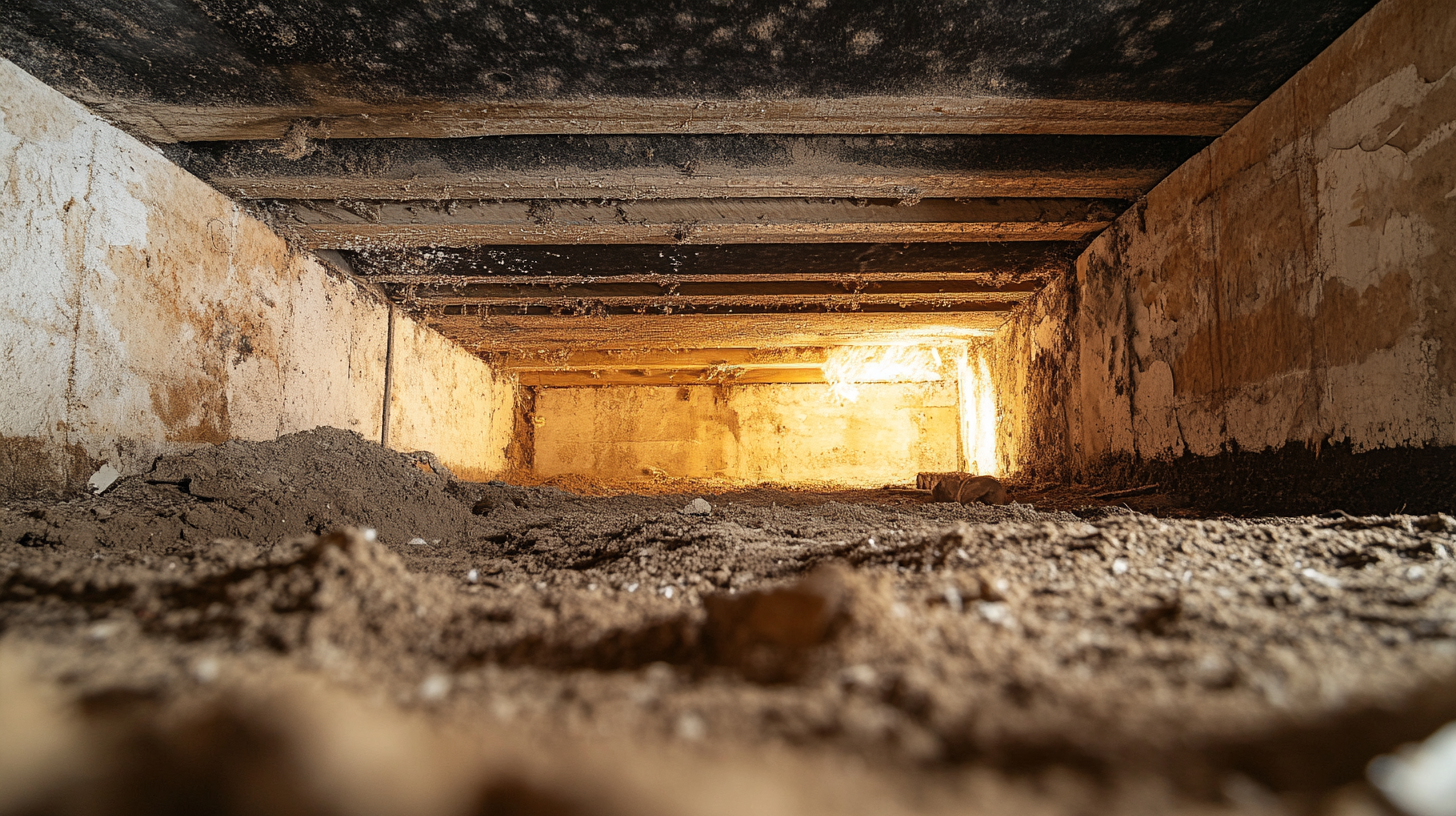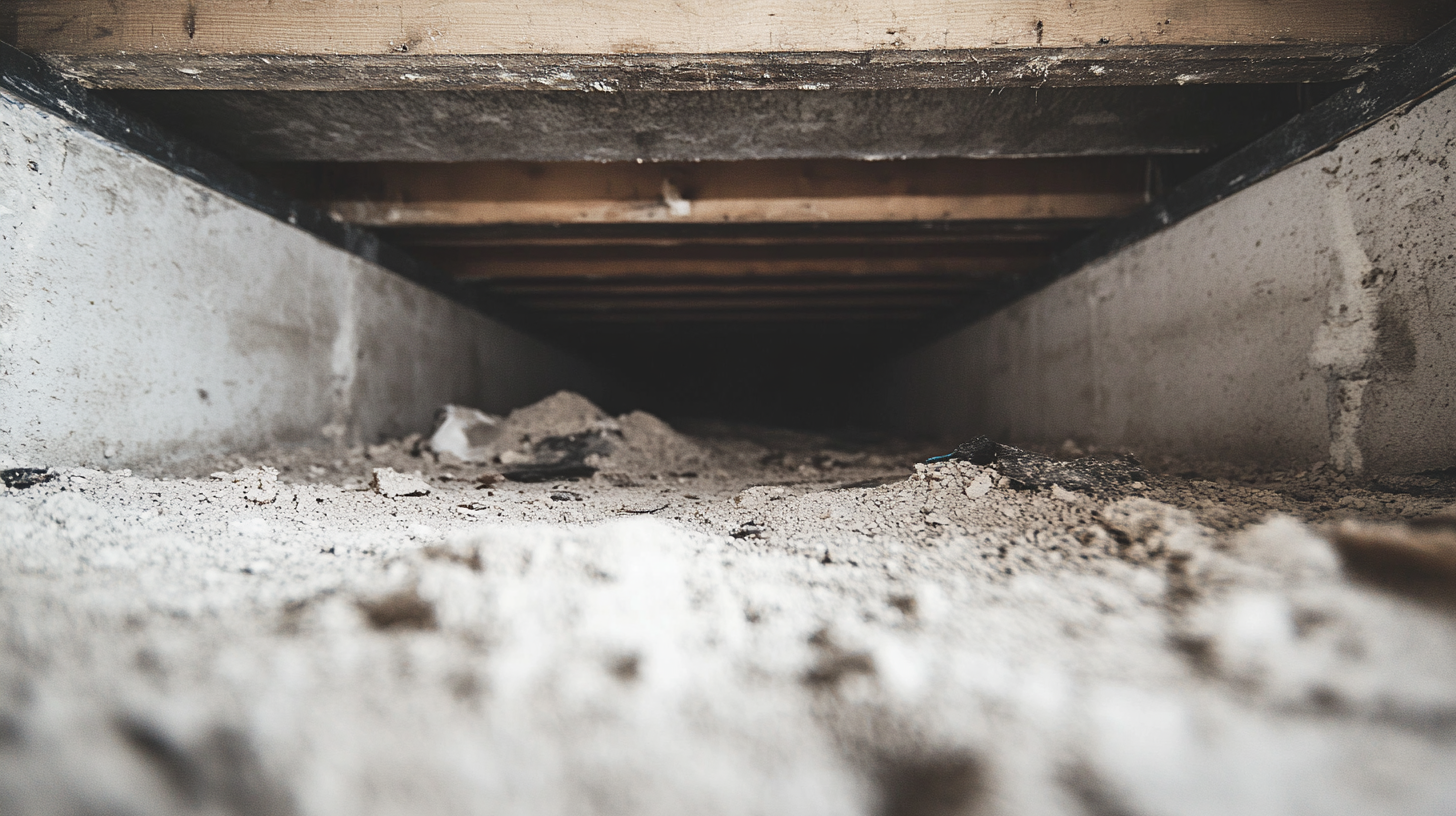Challenges in Soot Removal: Common Problems and Solutions

In the quiet aftermath of a fire, the challenge of returning to normalcy begins—an endeavor complicated by the presence of soot. This fine, powdery substance, a byproduct of incomplete combustion, blankets surfaces, infiltrates the nooks and crannies of our spaces, and poses significant health risks. The task of soot removal, therefore, is not merely a matter of cleanliness but a crucial step towards restoration and safety. However, this process is fraught with complexities that demand a nuanced understanding and approach.
Soot removal transcends simple cleaning; it is a multifaceted challenge influenced by the type of materials burned, the extent of the damage, and the surfaces affected. Each fire is unique, producing soot with distinct characteristics—ranging from oily and sticky residues left by synthetic materials to the fine, powdery soot from natural substances. These differences in composition necessitate tailored cleaning strategies, as the wrong approach can exacerbate the damage, embedding soot deeper into materials or rendering it nearly impossible to remove.
Moreover, the health implications of soot exposure add layers of complexity to the removal process. Soot particles, especially those fine enough to be inhaled, can carry carcinogens and other toxic substances into our lungs, making the use of appropriate protective gear and methods not just advisable but essential.
This blog aims to unravel the complexities involved in soot removal, offering insights into the nature of soot, the challenges it presents, and the strategies for effective and safe cleanup. By understanding the intricacies of soot removal, homeowners, restoration professionals, and all affected by fire can navigate the cleanup process more effectively, ensuring a thorough restoration and the well-being of all involved.
Identifying Common Soot Removal Challenges
In the aftermath of a fire, soot removal emerges as a pivotal yet daunting task. The complexity of this process is not merely a function of the extent of the damage but also the inherent properties of soot and its variability based on the source of combustion. Understanding these challenges is crucial for developing effective strategies for soot removal and ensuring the safety and cleanliness of the affected environment. This exploration delves into the stubborn nature of soot and the impact of different combustion materials on soot characteristics, shedding light on the common hurdles faced in soot removal.
The Stubborn Nature of Soot
Soot's difficulty to remove stems from its unique properties. Composed of tiny carbon particles, soot can adhere strongly to almost any surface it comes into contact with, from porous materials like fabric and wood to non-porous surfaces such as metal and glass. This adherence is not merely superficial; soot particles can penetrate deep into materials, making surface cleaning insufficient in many cases.
- Adhesive Quality: Soot particles possess an oily, sticky residue, especially when produced from synthetic or fossil fuel sources. This residue enhances soot's ability to cling to surfaces, complicating removal efforts.
- Fine Particulate Nature: The microscopic size of soot particles allows them to infiltrate tiny crevices and pores in materials, beyond the reach of conventional cleaning methods.
- Acidic Composition: Soot often contains acidic compounds that can react with surfaces, causing discoloration, corrosion, or further embedding the soot into the material.
Variability of Soot Based on Source
The challenges of soot removal are further compounded by the variability of soot, which depends on the materials involved in the combustion process. Different sources of combustion produce soot with distinct characteristics, each presenting unique removal challenges.
- Organic Materials: Soot from wood, paper, and natural fibers tends to be powdery and can be widespread, covering large areas. While it may be easier to remove from hard surfaces, it poses significant challenges for porous materials, where it can become deeply embedded.
- Fossil Fuels: Soot from the burning of coal, oil, or gas is often greasier and stickier. This type of soot is particularly challenging to remove due to its tendency to smear, requiring specialized solvents to break down the oily residue.
- Synthetic Materials: The combustion of plastics and synthetic fabrics produces soot that is not only sticky and oily but also potentially toxic. Removing this soot requires careful handling to avoid health risks, often necessitating professional cleaning services for safe and effective removal.
The task of soot removal is a testament to the complexity of dealing with fire damage. By recognizing the stubborn nature of soot and the variability introduced by different combustion sources, individuals and professionals can better prepare for the challenges of soot removal. This understanding is crucial for selecting the appropriate cleaning methods and products, ensuring a thorough cleanup that addresses both the visible and microscopic impacts of soot.
Specific Challenges and Solutions in Soot Removal
The aftermath of a fire leaves behind soot, a pervasive and stubborn residue that presents unique challenges based on where it lands. From porous surfaces that absorb soot like a sponge to delicate materials that can be easily damaged, the task of soot removal requires a nuanced approach. This guide explores the specific challenges encountered when dealing with soot on various surfaces and offers targeted solutions to address these issues effectively, ensuring a thorough cleanup while preserving the integrity of the affected items.
Soot on Porous Surfaces
Challenges: Porous surfaces, such as wood, drywall, and fabrics, are particularly vulnerable to soot penetration and staining. The porous nature of these materials allows soot particles to embed deeply, making surface cleaning methods largely ineffective and leaving behind stubborn stains.
Solutions:
- Deep Cleaning: For fabrics, pre-treating with a stain remover followed by washing in the hottest water the fabric can tolerate may help lift the soot. Multiple washes may be necessary.
- Stain Removal: For wood and drywall, creating a cleaning paste from a mixture of trisodium phosphate (TSP) and water can be effective. Apply the paste gently, let it sit, then wipe off. Always test in an inconspicuous area first to ensure it doesn't cause damage.
- Professional Equipment: In some cases, especially for extensive damage, professional-grade equipment like HEPA vacuums and steam cleaners may be necessary for deep extraction of soot particles.
Soot in Hard-to-Reach Areas
Challenges: Soot doesn't discriminate, finding its way into nooks, crannies, and other hard-to-reach areas. These spots are challenging not only in terms of accessibility but also in ensuring thorough cleaning without spreading the soot further.
Solutions:
- Tools for Accessibility: Use tools like paintbrushes, cotton swabs, and compressed air to dislodge soot in tight spaces. A vacuum with a HEPA filter and crevice tool attachment can then be used to remove the dislodged soot.
- Methodical Approach: Work from top to bottom and in small sections to prevent soot from spreading to clean areas. Covering or sectioning off cleaned areas can also help.
Soot on Delicate Materials
Challenges: Delicate materials, such as antiques, artwork, and fine textiles, pose a significant challenge in soot removal. The risk of damage during cleaning is high, requiring a gentle touch and specialized knowledge.
Solutions:
- Gentle Cleaning Techniques: Use soft brushes and cloths to lightly dust off soot. For textiles, gentle vacuuming through a screen can prevent fabric damage.
- Professional Consultation: When dealing with high-value or irreplaceable items, consulting with conservation professionals is advisable. These experts have the skills and tools to clean and preserve delicate items safely.
Soot removal is a complex task that demands a strategic approach tailored to the specific challenges presented by different materials and areas. By understanding these challenges and applying the appropriate solutions, homeowners and restoration professionals can navigate the soot removal process more effectively, ensuring a thorough cleanup that minimizes damage and preserves the value of affected items.
Overcoming Soot Removal Obstacles
The aftermath of a fire leaves a daunting task in its wake: the removal of soot from affected surfaces. This task is complicated by the varied nature of soot, which depends on the materials burned, and the diversity of surfaces that can be affected. Successfully overcoming the obstacles of soot removal requires a careful selection of cleaning agents and an understanding of innovative cleaning technologies that can make the process more efficient and effective. This guide provides insights into choosing the right cleaning agents for different types of soot and surfaces, as well as an overview of advanced cleaning methods and equipment designed to tackle tough soot removal challenges.
Choosing the Right Cleaning Agents
The key to effective soot removal lies in selecting cleaning agents that are both effective against soot and safe for the surface being cleaned. Here are guidelines for making informed choices:
- Understand Soot Composition: Recognize that soot composition varies based on the combustion material. Soot from wood or organic materials may require different cleaners than soot from plastics or fossil fuels.
- Surface Compatibility: Always consider the material of the surface affected by soot. Delicate surfaces like upholstery or certain types of paint may be damaged by harsh chemicals, necessitating gentler cleaning agents.
- Eco-Friendly and Safe Options: Opt for cleaning agents that are environmentally friendly and safe for occupants. Natural solutions, such as vinegar or baking soda, can be effective for certain types of soot and surfaces.
- Professional-Grade Products: For stubborn or hazardous soot, professional-grade cleaning agents may be necessary. These products are designed to tackle tough residues but should be used according to manufacturer instructions to avoid damage.
Innovative Cleaning Technologies
Beyond traditional cleaning agents, several innovative cleaning technologies have emerged to address the challenges of soot removal more effectively:
- HEPA Filter Vacuums: High-Efficiency Particulate Air (HEPA) filter vacuums can capture extremely fine soot particles, making them invaluable in the initial stages of soot removal.
- Ultrasonic Cleaning: This technology uses high-frequency sound waves to clean items at the microscopic level, ideal for delicate items that cannot withstand traditional cleaning methods.
- Laser Ablation: Laser cleaning is a non-contact method that removes soot and residues from surfaces without abrasion, water, or chemicals, preserving the integrity of the material underneath.
- Ozone Generators: For deodorizing, ozone generators can break down the molecules responsible for smoke odors, effectively neutralizing smells that often accompany soot.
Adopting these innovative technologies can significantly enhance the efficiency and effectiveness of soot removal efforts, especially in cases where traditional methods fall short. However, it's important to weigh the cost and practicality of these technologies against the scope of the soot removal project.
Successfully overcoming the obstacles of soot removal requires a strategic approach that combines the right cleaning agents with innovative technologies. By carefully selecting products that are both effective against soot and safe for the surfaces being cleaned, and by leveraging advanced cleaning methods, homeowners and professionals can navigate the challenges of soot removal with confidence, restoring affected areas to their pre-damage state.
Professional vs. DIY Soot Removal
The aftermath of a fire presents a significant challenge in the form of soot removal. While some instances of soot can be addressed with do-it-yourself (DIY) efforts, there are situations where professional soot removal services become indispensable. Understanding when to call in the professionals and recognizing the benefits they bring can help ensure that your property is restored safely and effectively. This guide explores the indicators that professional services are needed and the advantages of entrusting this task to experts.
When to Call in the Professionals
Determining when to seek professional soot removal services is crucial for effective cleanup and restoration. Here are signs that it's time to call in the experts:
- Extensive Damage: When soot covers a large area or affects multiple rooms, the scale of cleanup may be beyond the scope of DIY methods.
- HVAC Contamination: If soot has entered your HVAC system, professional cleaning is necessary to prevent the spread of soot particles throughout your home or building.
- Presence of Hazardous Materials: Soot resulting from the burning of synthetic materials or chemicals can pose serious health risks. Professionals have the necessary equipment and expertise to handle these hazards safely.
- Structural Concerns: If the structural integrity of your property has been compromised, professionals can assess and address the damage without risking further harm.
- Persistent Odors: Professionals use advanced techniques like thermal fogging and ozone treatment to eliminate smoke odors that DIY methods cannot remove.
Benefits of Professional Soot Removal
Opting for professional soot removal services offers several advantages, particularly for complex or extensive cleanup tasks:
- Expertise and Experience: Professionals bring a wealth of knowledge and experience to the task of soot removal. They can accurately assess the extent of damage and determine the most effective cleaning strategies.
- Advanced Equipment: Professional services have access to advanced cleaning technologies and equipment, such as HEPA vacuums, ultrasonic cleaners, and specialized chemical treatments, that are not typically available to the general public.
- Safety: Handling soot can expose individuals to harmful contaminants. Professionals are trained in safe handling practices and use appropriate personal protective equipment (PPE) to minimize health risks.
- Efficiency: With their expertise and equipment, professionals can complete the soot removal process more quickly and efficiently than DIY methods, allowing you to return to normalcy sooner.
- Peace of Mind: Knowing that your property is in the hands of experts can provide peace of mind during the stressful aftermath of a fire. Professional services often come with guarantees or warranties, ensuring that the job is done right.
While DIY soot removal can be effective for minor incidents, recognizing when to call in professional services is key to addressing more significant challenges. The expertise, equipment, and safety measures that professionals bring to the task offer invaluable benefits, ensuring thorough cleanup and restoration of your property.
Preventive Measures to Minimize Soot Accumulation
Soot accumulation is a pervasive issue that can affect air quality, health, and cleanliness in both homes and workplaces. While soot removal post-incident is crucial, implementing preventive measures to minimize soot production and accumulation is equally important. By addressing soot at its source and adhering to regular maintenance and cleaning routines, individuals and businesses can significantly reduce the impact of soot. This guide offers practical tips for reducing soot production and outlines guidelines for maintenance and cleaning to prevent excessive soot buildup.
Reducing Soot Production at the Source
Minimizing soot production involves understanding and modifying the activities and appliances that contribute to its generation. Here are tips to reduce soot production:
- Optimize Combustion Appliances: Ensure that furnaces, boilers, and stoves are properly adjusted to burn fuel efficiently. Incomplete combustion is a major source of soot production.
- Use Cleaner Fuels: Opt for cleaner fuels where possible. For example, natural gas produces less soot compared to coal or wood.
- Maintain a Clean Burn: Regularly clean and maintain fireplaces, wood stoves, and candles to ensure a clean burn. Using seasoned wood and trimming candle wicks can significantly reduce soot emissions.
- Ventilation Improvements: Improve ventilation in areas where combustion occurs to ensure adequate air flow, which helps achieve more complete combustion and reduces soot production.
- Switch to Electric Appliances: Where practical, switch from combustion-based appliances to electric alternatives, which do not produce soot.
Regular Maintenance and Cleaning
Routine maintenance and cleaning are key to preventing excessive soot buildup and facilitating easier removal. Implementing the following guidelines can help maintain a cleaner environment:
- HVAC System Maintenance: Regularly replace or clean HVAC filters to prevent soot particles from circulating through your home or workplace. Consider annual inspections and cleanings of ductwork to remove any soot accumulation.
- Frequent Dusting and Vacuuming: Incorporate dusting and vacuuming into your regular cleaning routine to remove soot particles before they can accumulate. Use a vacuum with a HEPA filter for more effective particle capture.
- Professional Chimney Cleaning: Schedule professional chimney cleaning annually to remove soot and creosote buildup, reducing the risk of chimney fires and improving indoor air quality.
- Monitor Indoor Air Quality: Use air purifiers with HEPA filters in areas prone to soot production, such as near fireplaces or in industrial settings, to continuously remove soot particles from the air.
By proactively addressing soot production at its source and maintaining a consistent cleaning and maintenance schedule, individuals and organizations can significantly reduce the presence of soot in their environments. These preventive measures not only contribute to cleaner, healthier indoor spaces but also simplify the process of soot removal, should it become necessary.
FAQs
Contact Fast Response Cleaning & Restoration Today!
Fast Response Cleaning & Restoration will do everything we can to ensure your experience with us is excellent.
Request A FREE Estimate
Request A FREE Estimate Form
CHECKOUT RECENT POST



Have an Emergency? We're Here to Help!
When it comes to disaster cleanup, we are a seasoned veteran in the industry and have helped hundreds of property owners just like you.
Our disaster recovery teams are available 24-7 to quickly clean up and repair disasters of all types.
